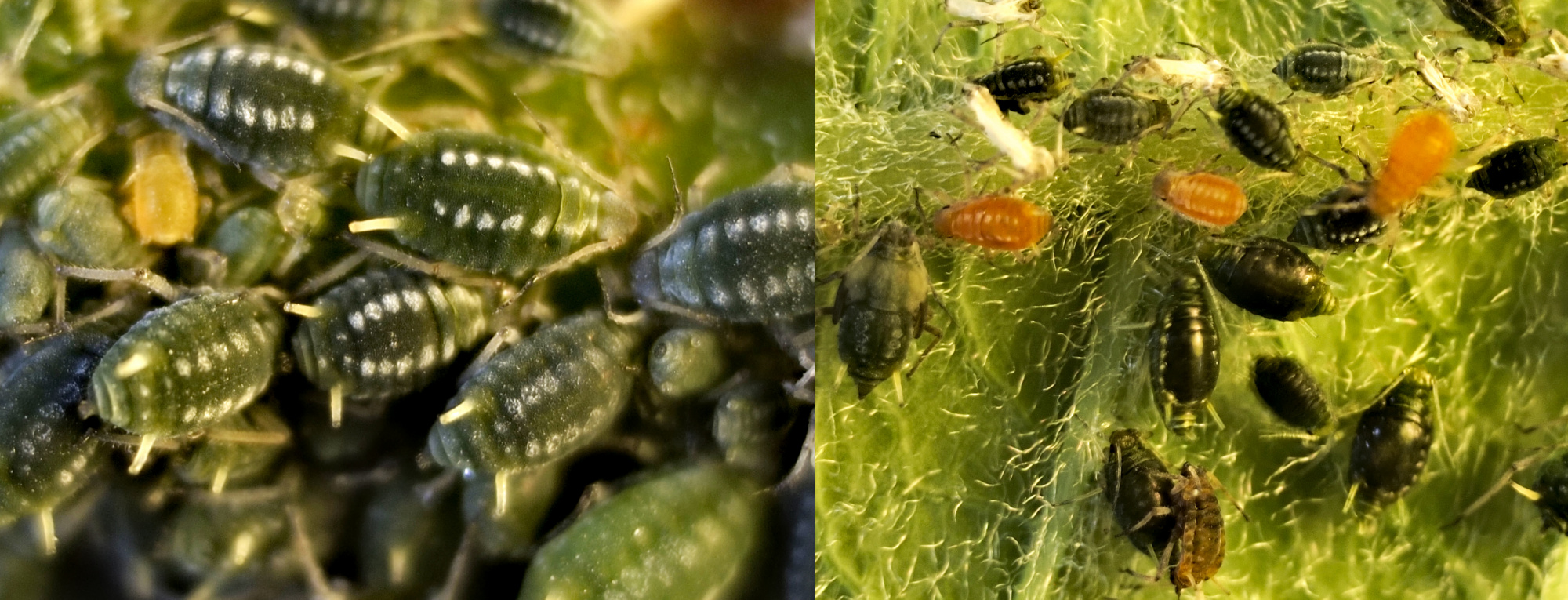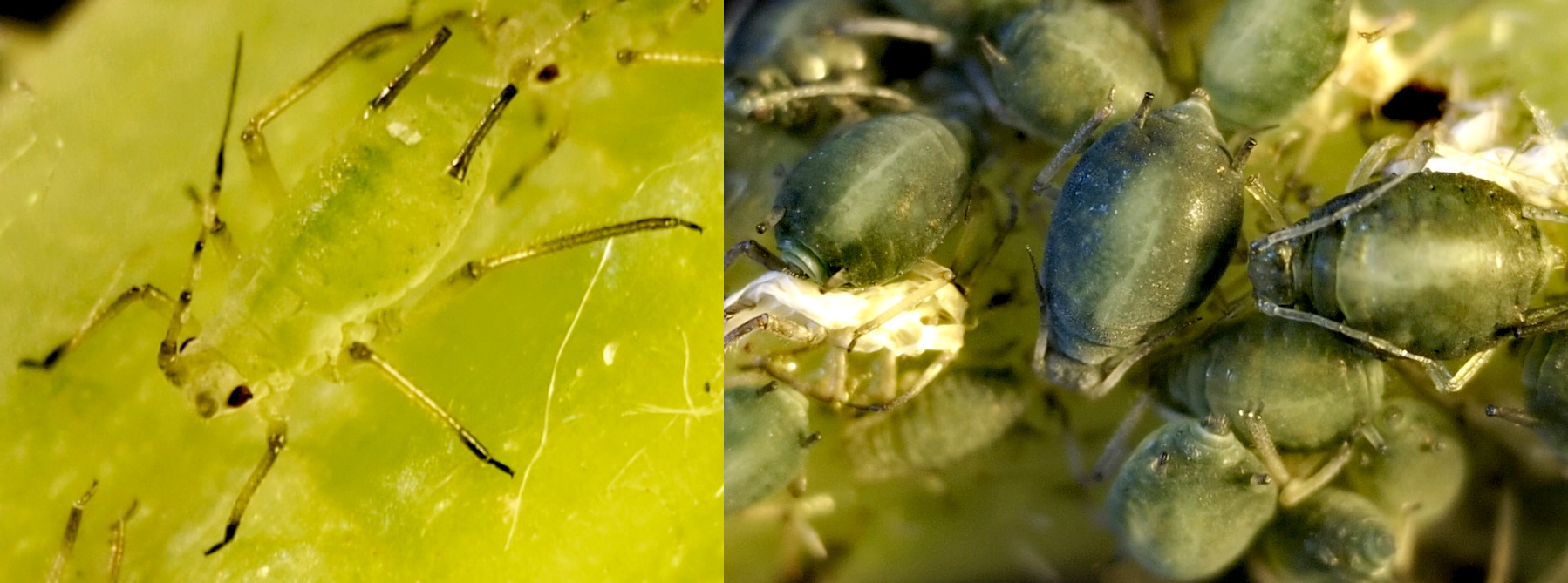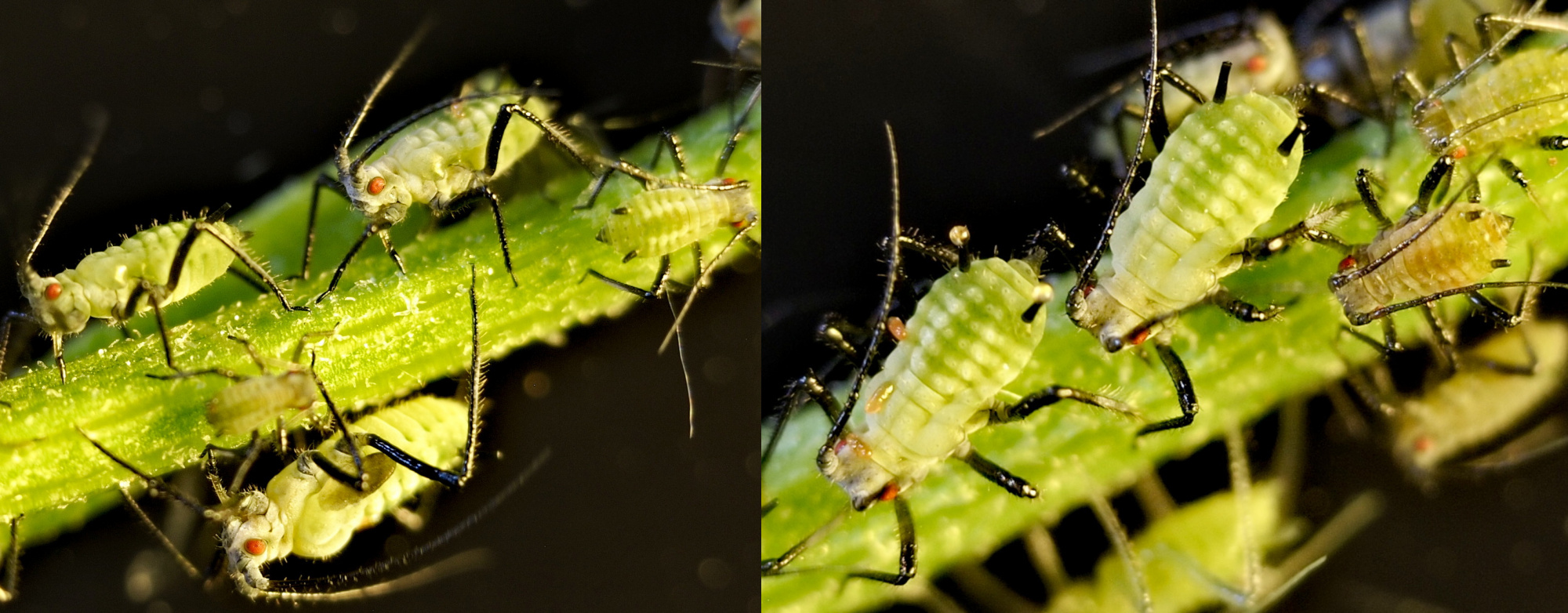
The original article appeared in 'Blad', the magazine of garden park Nieuw Vredelust
The reason for writing something about aphids was a Willow Tree in our garden that was infested with these very small insects. Aphids mainly reside on young leaves and stems. With the naked eye there is not much more to see than small, slowly moving oval shapes that are a few mm in size. All the more reason to have a look at them under magnification.
There are around 1500 different aphid species and some feed on one particular plant (monophagous) while others live on different plants (polyphagous). The phloem vessels of the plant are punctured with their sucking mouthparts (rostrum) and subsequently they drain the sap from these vessels that contain sugars and amino acids.
The aphids in our Willow Tree were probably - and this may be not surprising – small willow aphids (Aphis farinosa). When magnified, it is striking that these aphids have two white, protruding tube-like parts on their abdomen. These are called cornicles or siphuncules. It was once thought that from these cornicles the honeydew was secreted of which ants are so fond of. But in fact, a waxy substance is secreted from them in defense against enemies. Two rows of white spots can be seen on the abdomen of the small willow aphids; these are wax secretions.
Aphids on the leaves of a Willow Tree. The cornicles and wax secretions on the abdomen are clearly visible..
Within a colony I saw that the aphids had different shapes and colours; white, yellow, light green and black. Occasionally there were winged individuals.
The next day, I wanted to continue studying the aphids on the Willow Tree, but heavy rainfall during the night had washed away most of the insects. Aphids are also often found on Roses so I walked around the garden park to see if I could find them. I finally found some aphids on a Rose and I continued with photographing. These aphids might have been the common rose aphid (Macrosiphum rosae) and they were slightly larger than the willow aphids. Here too, I saw individuals with different colours. Finally, I also took pictures of aphids on an Elderberry and on Chamomile.
Left: close-up of an aphid on a Rose. This individual lacks an antenna. Right: aphids on an Elderberry.
Aphids on Chamomile. The left image shows the rostrum that the aphids use to penetrate the phloem vessels.
Technical details
Various microscope objectives were used as a macro objective: Zeiss-Winkel 2.5/0.06, Carl Zeiss 3.2/0.07 and Olympus 4/0.10. The microscope objective is connected to the camera with a special adapter and the image is projected directly onto the camera sensor.


